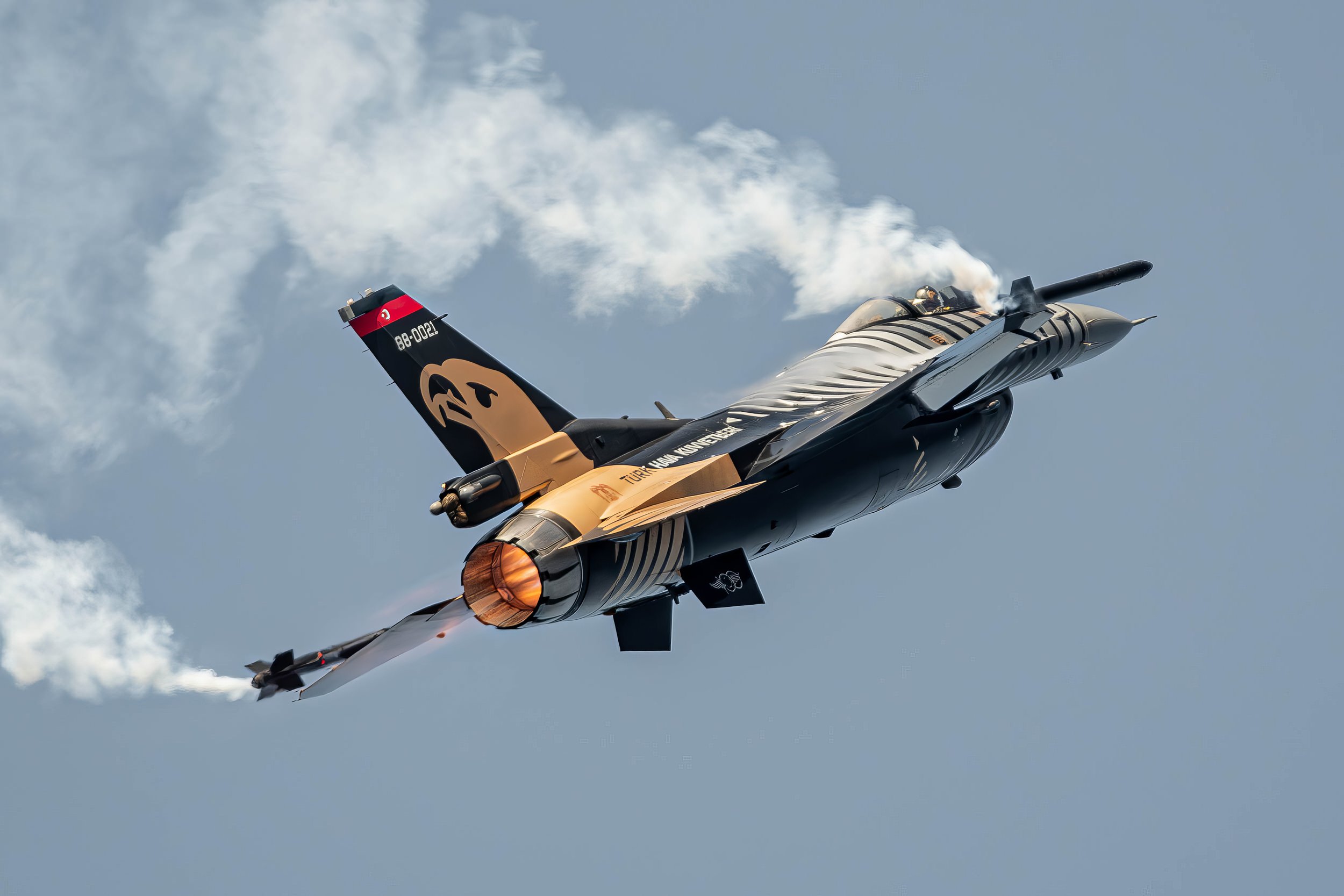Daedalus Demo Team
Country
Greece
Aircraft
T-6A Texan II
Base
Kalamata Air Base
Beechcraft T-6A Texan II
The Beechcraft T-6 Texan II is a single-engine turboprop aircraft built by the Raytheon Aircraft Company (which became Hawker Beechcraft and later Beechcraft Defense Company and was bought by Textron Aviation in 2014). A trainer aircraft based on the Pilatus PC-9, the T-6 has replaced the United States Air Force's Cessna T-37B Tweet and the United States Navy's T-34C Turbo Mentor. The T-6A is used by the United States Air Force for basic pilot training and Combat Systems Officer (CSO) training, the United States Navy and the United States Marine Corps for primary Naval Aviator training and primary and intermediate Naval Flight Officer (NFO) training, and by the Royal Canadian Air Force (CT-156 Harvard II designation), Greek Air Force, Israeli Air Force (with the "Efroni" nickname), an Iraqi Air Force for basic flight training. The T-6B is the primary trainer for U.S. student naval aviators (SNAs). The T-6C is used for training by the Mexican Air Force, Royal Air Force, Royal Moroccan Air Force, and the Royal New Zealand Air Force.
The Model 3000/T-6 is a low-wing cantilever monoplane with enclosed tandem seating for two. It is powered by a single Pratt & Whitney Canada PT6A-68 turboprop engine in tractor configuration with an aluminium, 97-inch, four-blade, constant-speed, variable pitch, non-reversing, feathering propeller assembly and has retractable tricycle landing gear. The aircraft is fitted with Martin-Baker Mark 16 ejection seats and a canopy fracturing system.
The T-6 is a development of the Pilatus PC-9, modified by Beechcraft to enter the Joint Primary Aircraft Training System (JPATS) competition in the 1990s. A similar arrangement between Pilatus and British Aerospace had also been in place for a Royal Air Force competition in the 1980s, although that competition selected the Short Tucano. The aircraft was designated under the 1962 United States Tri-Service aircraft designation system and named for the decades-earlier T-6 Texan.
The JPATS competition-winning design was based on a commercial off-the-shelf Pilatus PC-9, with minor modifications. Additional requirements and conflicts between the Air Force and the Navy resulted in delays, cost increases (from initial estimates of $3.9 to roughly $6 million per aircraft), and a completely new aircraft that is 22% or 1,100 pounds (500 kg) heavier than the Pilatus.
On 9 April 2007, the U.S. Department of Defense released their Selected Acquisition Reports, which reported that the T-6 JPATS program was one of only eight programs cited for Congressional notification for 25–50% cost overrun over initial estimates, which is referred to as a "Nunn-McCurdy Breach" after the Nunn-McCurdy Amendment. It is unusual for a program so far into full-rate production to experience significant enough cost overruns to trigger this congressional notification.
| Back to Top |

Photo by: Ronnie Macdonald
License: Creative Commons Attribution-Share Alike 2.0
| Back to Top |

































